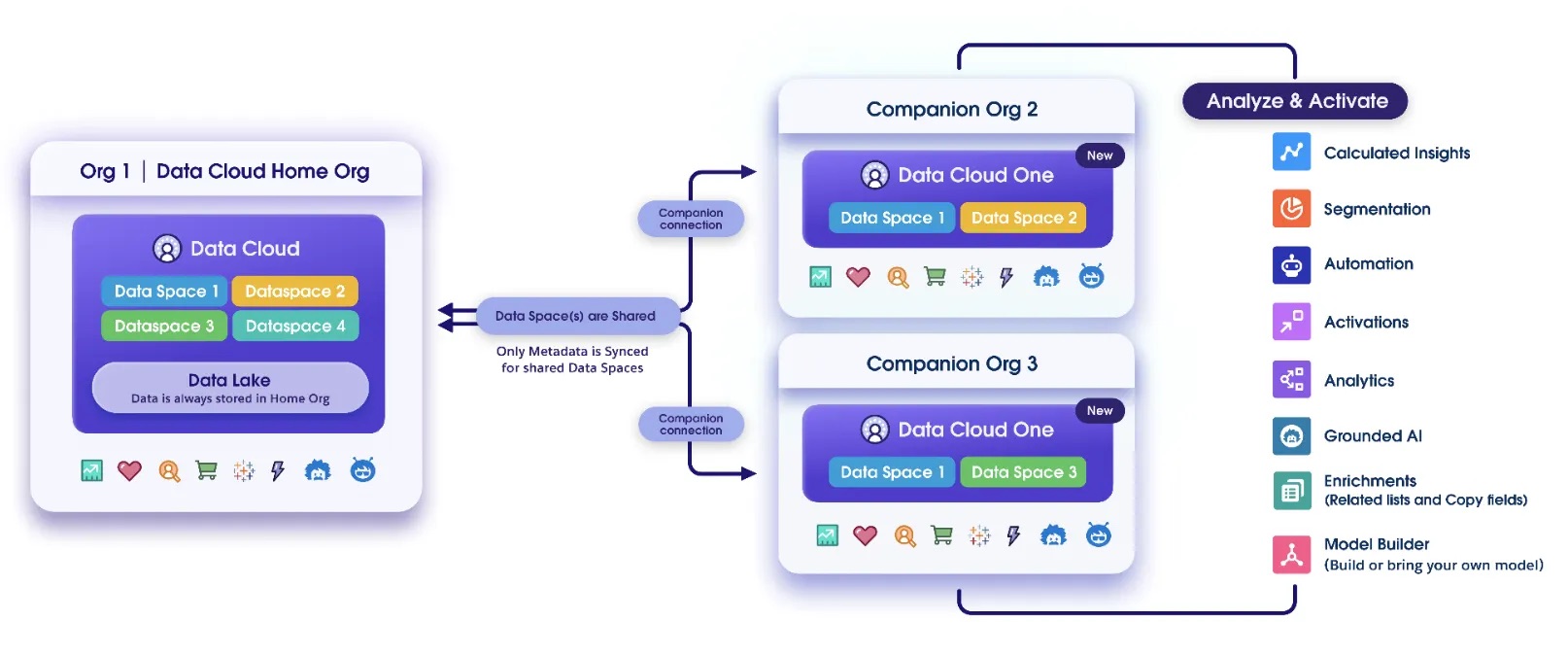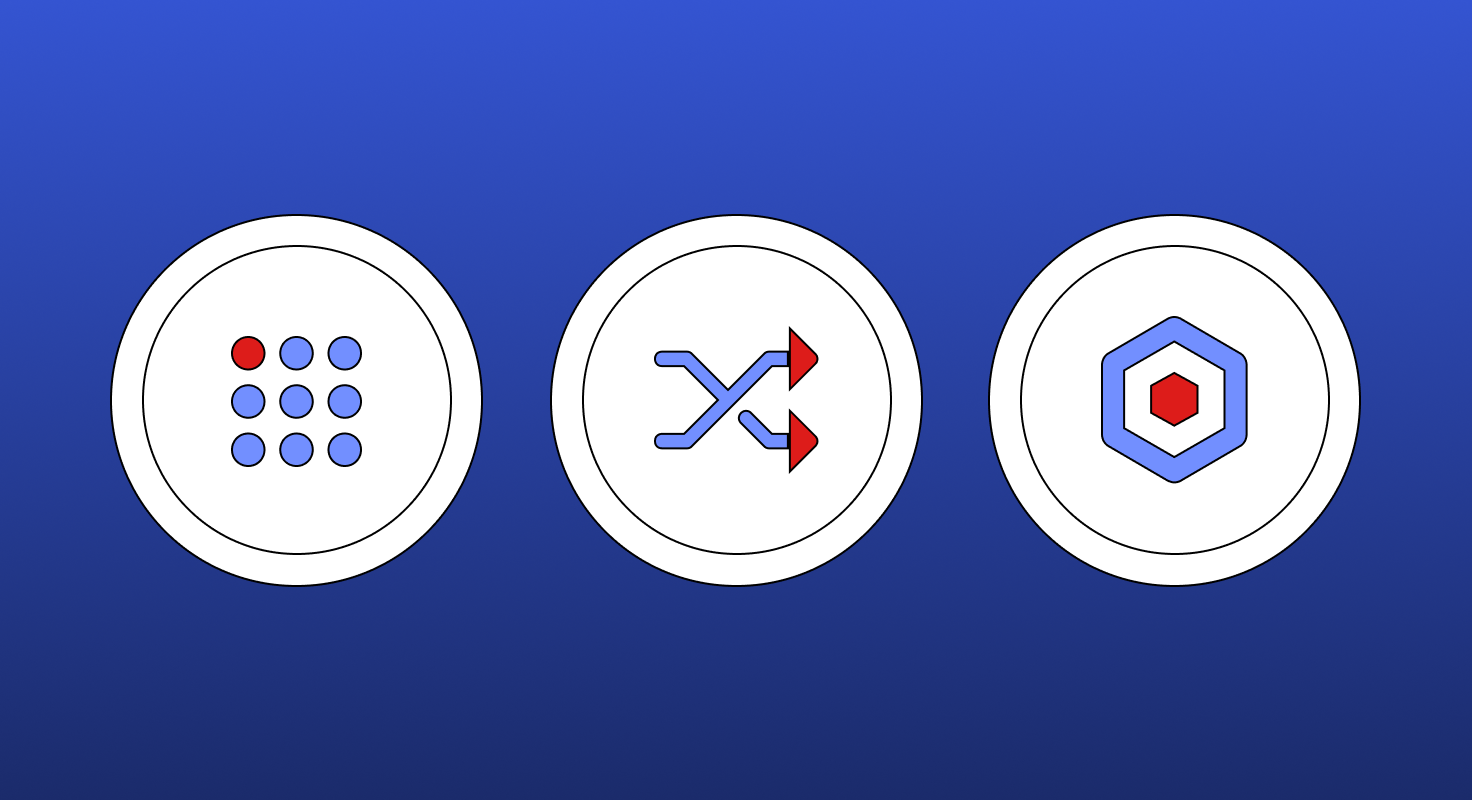If you’ve ever worked inside a company with more than one Salesforce org, you already know how messy things can get. A single customer might exist three or four times across systems, each with slightly different details. Marketing thinks they’re dealing with one person, Sales another, and Service often has the most complete picture but no easy way to share it. The result? Time wasted, opportunities missed, and a customer experience that feels anything but seamless.
This is not an edge case. Mergers and acquisitions, regional structures, or separate business lines all lead to multiple orgs — and with them, multiple versions of the truth. Until now, companies had to either live with the inefficiency or invest in expensive custom integration projects, often rebuilding the same identity rules and data pipelines over and over.
That’s why Salesforce introduced Data Cloud One — to break this cycle of silos and quick fixes. Instead of asking every org to solve the same data challenges on its own, Data Cloud One creates a central “home org” that becomes the trusted source of harmonized data, identity resolution, and insights. From there, connected “companion orgs” can tap into that intelligence and use it natively, without the overhead of building their own pipelines or governance rules.
The idea is simple but powerful: unify once, share everywhere. When Sales in one region looks up a customer, and Service in another region does the same, they’re both drawing from the same golden record. Marketing can build segments from complete profiles, rather than partial or conflicting views. And IT can stop replicating integration work and focus on higher-value initiatives. It’s a model that balances the efficiency of centralization with the flexibility of distributed teams.

What sets Data Cloud One apart isn’t just the technology, but the way it reimagines how organizations can manage customer data across Salesforce. You don’t need to spin up a separate Data Cloud for every org, nor do you need to collapse all your business units into one monolithic instance. Instead, you keep your orgs where they are, connect them through clicks (not code), and decide what gets shared through Data Spaces.
This controlled sharing model is especially valuable for businesses with regional sensitivities or regulatory requirements. A European org can access the insights it needs without exposing customer data from North America, and a brand can maintain autonomy while still benefiting from enterprise-wide intelligence. The result is trust — not just in the accuracy of the data, but in the governance model that keeps it safe.
Scenario We Faced Before
A SaaS provider that’s grown quickly through acquisitions and acquired businesses that came with its own Salesforce org, filled with overlapping accounts and duplicate contacts. With Data Cloud One, all those orgs could connect to a single home org where identities were resolved once. From then on, reps across every region saw the same unified customer profile, no matter which org they log into. That simple shift reduced duplicate chasing and frees sellers to spend more time building relationships and closing deals.
Another of our clients, a global retailer with strong regional brands has guarded its customer data closely, reluctant to give up control. With Data Cloud One, they didn’t have to. Data Spaces allowed them to share just the attributes and insights each brand is entitled to see, while still benefiting from the central identity resolution and harmonization. Marketing teams gained the data they need to drive campaigns, but autonomy and compliance were preserved.
How Quickly Value Can Be Proven ?
One of the strengths of Data Cloud One is that you don’t need a massive transformation to see results. Many companies we helped see value in just weeks. The recipe is straightforward: designate your home org, connect a couple of companions, and ingest core account and contact data. Run identity resolution, create your first segment, and share it back to the companion orgs.
The outcome is tangible almost immediately. Duplicates drop. Segments become more precise. Sales and Service see enriched profiles without doing anything differently in their day-to-day workflows. And because results are centralized, it’s easy to measure impact — whether that’s in reduced manual cleanup, campaign lift, or faster onboarding of newly acquired orgs. Those quick wins build momentum and executive confidence to scale.
But not everything is perfect, a word of caution, of course Data Cloud One isn’t a magic switch. Governance is key. You’ll need to be intentional about what each companion org can see and do, and you’ll want clear ownership defined for schema changes, identity rules, and segment logic. Credit consumption should be monitored closely, since companion org activity still runs through the home org’s credit pool. And as with any data initiative, compliance requirements must be respected. With the right operating model and stewardship in place, these risks become manageable.
In our opinion Data Cloud One isn’t just a fix for duplicate records or a shortcut around multi-org integrations. It’s part of a broader shift toward data as the foundation for AI-driven experiences. As Salesforce continues to embed Agentforce, Einstein Copilot, and predictive analytics into the platform, they will all depend on having a unified, trustworthy view of the customer. Data Cloud One ensures that view exists across every org you run. For organizations tired of reconciling fragmented data, it offers a way forward: one identity, one source of truth, activated everywhere. It’s not about collapsing your business units into sameness — it’s about giving each team what they need, without sacrificing consistency or trust.
